
What grows best in North Carolina? ShrubHub's Top 15 Picks
Published: 28/05/2025 | Updated: 28/05/2025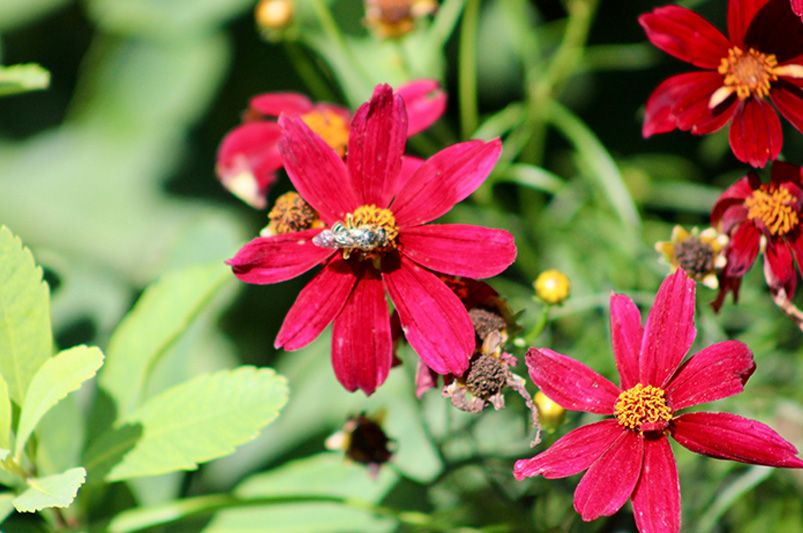
Key Highlights
-
Discover the beauty and ecological advantages of North Carolina native plants that thrive in diverse regions, including mountains, piedmont, and coastal plains.


-
Gain insights into the benefits of using native plants, like enhancing soil health, conserving water, and supporting local wildlife habitats.
-
Explore a curated list of 15 stunning native plants, from the vibrant cardinal flower to the pollinator-friendly purple coneflower.
-
Learn planting strategies, maintenance tips, and creative design ideas to maximize the aesthetics and sustainability of your landscape.
-
Understand the challenges of growing native plants, along with actionable solutions, community resources, and success stories to inspire your gardening journey.
Introduction
North Carolina has a lot of natural beauty that comes from its many native plants. These plants are made to do well in the areas where they grow. You can find North Carolina native plants in the mountain areas, the coast, and everywhere in between. They show many bright colors and are good for the local environment. If you plant these types in your yard, they stay strong through the whole growing season in North Carolina. They also help the area stay healthy and green for a long time. In this article, you will see some of the most beautiful native plants, and get simple tips for how to grow them. This can help you make your yard look great, and you will find the work to be easy.
Understanding Native North Carolina Plants
Native plants play a big part in keeping North Carolina’s rich ecosystem strong. They grow well here without needing a lot of help from people or human intervention. Over time, these plants have learned how to do well in the local soil, weather, and around the state's animals. This makes them really special for the mountains, piedmont, and coastal areas in North Carolina.
If you pick native North Carolina plants for your yard, you help out all kinds of living things and bring more life to your garden. These plants are tough, so they do not need much care. You will use less fertilizer and fewer pesticides. This makes them a great choice if you want to help the environment. They are good for nature, the state, and anyone who loves to make things grow.
Definition and Importance of Native Plants
Native plants are types of plants that are found in a certain place, like North America, and they grow well without any help from people. They have changed and grown along with the climate, soil conditions, and wildlife around them in the United States over many years. These plants are different from non-native ones because they fit in so well with their home areas.
Growing native plants is important because they help keep the natural balance. These plants give food and shelter to local wildlife and help hold natural areas together. This is very important in places like North Carolina, where native perennials help make sure there are a lot of different plants and animals.
Native plants are also good for the earth. Because they are already strong in their own soil conditions, you do not need to use a lot of extra water or chemicals like fertilizers. If you are a gardener in North Carolina, choosing native plants is a good way to make your space look nice and to help the environment where you live.
Benefits of Growing Native Plants in North Carolina
Growing native plants in North Carolina gives many good benefits. These plants fit well with the soil conditions in the area. They grow without much work. This means you do not need to change or add much to the soil. They also stop soil from washing away because of their strong roots.
Native plants are important food for pollinators, birds, and small wildlife. Swamp milkweed, for example, is important for monarch butterflies. These plants help to keep the local environment healthy and strong.
Native plants also help the land to stay healthy. They fit in well with the many regions in North Carolina. This makes the land more balanced. If you plant them in woodland gardens or in open, sunny meadows, they make the soil better. They also help more types of plants, animals, and insects to grow. Planting natives is a good way to improve your landscape and bring more life to it.
Top 15 Native Plants for North Carolina Gardens
North Carolina is home to many kinds of native plants. The state has everything from bright flowers to tough shrubs and trees. These plants are not only nice to look at, but they also do good things for the environment. Picking the right type for your garden helps your yard work well with the rest of the area, whether you are on the coast, in the mountains, or in the piedmont.
In this part, you will learn about 15 top North Carolina native plants. It mentions lobelia cardinalis, which does well in wet spots, and echinacea purpurea, which stands up to dry weather. If you keep reading, you will find out about other kinds too, like butterfly weed and oakleaf hydrangea. These are great choices to help your garden grow strong and support the earth.
Cardinal Flower (Lobelia cardinalis)
The cardinal flower (Lobelia cardinalis) is a beautiful native plant in North Carolina. It can be noticed by its tall spiked inflorescence. The plant grows well in wet soil conditions. It is a herbaceous perennial, and many gardeners love to have it in their gardens. The cardinal flower brings in a variety of pollinators, such as native bees and hummingbirds. This makes it a good option for people who want to attract local wildlife.
You can often see the cardinal flower near stream banks or in woodland gardens. Its bright red blooms stand out against green leaves. Not only does it look good, but it also helps the local area. That is because this plant is a food source in late summer and early fall. So, it supports biodiversity by helping bees, birds, and other creatures. This makes the cardinal flower an excellent addition to your garden or natural space.
Eastern Blue Star (Amsonia tabernaemontana)
Amsonia tabernaemontana, also called eastern blue star, is a native plant that grows well in moist, well-drained soil. It is a good pick for stream banks and woodland gardens. In the growing season, it shows off blue, star-shaped flowers. These flowers get the attention of a variety of pollinators, like native bees and butterflies. The plant’s green leaves look glossy and make the space feel full and fresh. In fall, these leaves turn a nice golden color.
Eastern blue star will not attract deer, so it’s a great choice if you want to keep those away. This plant can grow in partial shade or full sun, so it works for different garden conditions. It adds beauty to any garden, and at the same time helps the local environment.
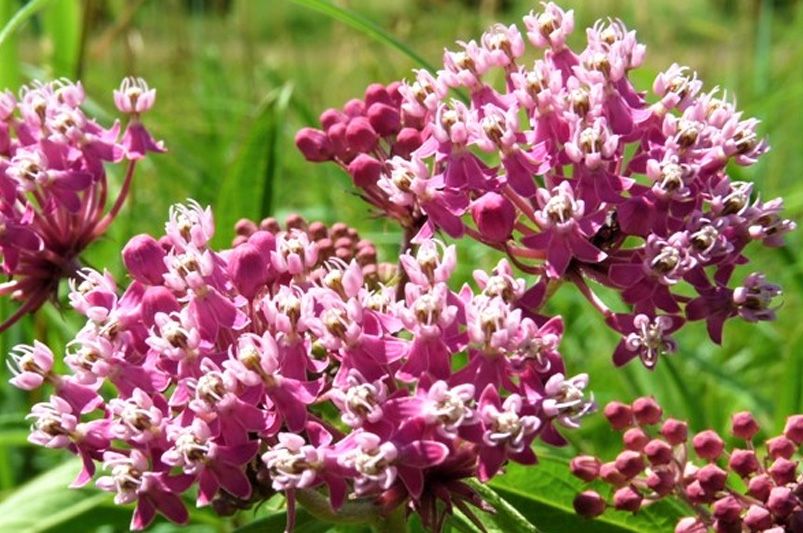
Swamp Milkweed (Asclepias incarnata)
Swamp milkweed, also called Asclepias incarnata, is a native plant in North Carolina. It grows best in wet soil conditions, so it is good for places like stream banks and rain gardens. This herbaceous perennial has pink flowers that stand out and catch the eye. You will see a variety of pollinators visit them, especially monarch butterflies. The butterflies depend on this plant as a host.
You need to give it full sun and keep the soil moist for it to do well. Swamp milkweed adds color to your garden and helps the local environment. This plant also does well in different garden conditions and is tough, so it is a great choice for your yard in North Carolina.
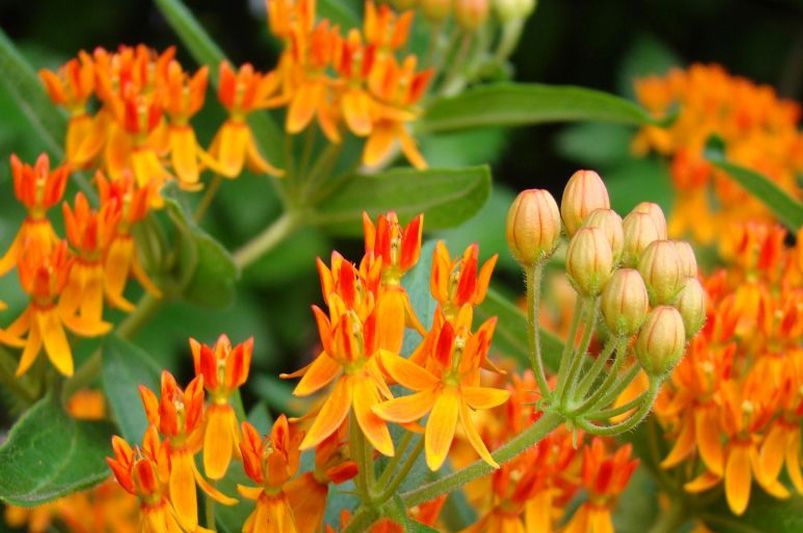
Butterfly Weed (Asclepias tuberosa)
Butterfly weed (asclepias tuberosa) brings bright, orange flowers to any garden and is a good choice for those in North Carolina. It attracts a variety of pollinators, and monarch butterflies love it the most. This plant grows well in full sun and in sandy soils that drain water fast, so it is perfect for drier habitats.
Butterfly weed is not just nice to look at. It is also important for caterpillars, helping many kinds of plants and animals in the area. People often use this plant in a pollinator garden or as ground cover, thanks to its hardy and dry-loving nature. Its strength and beauty make it one of the best plants to use in North Carolina gardens.
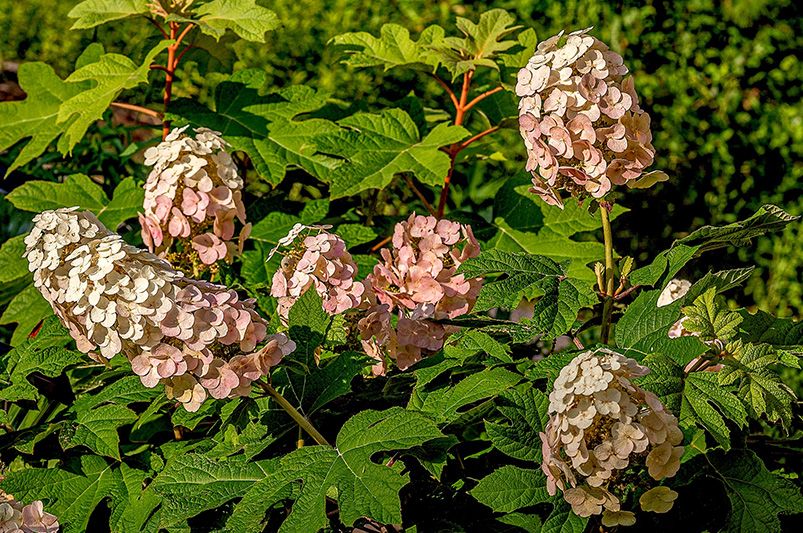
Oakleaf Hydrangea (Hydrangea quercifolia)
Oakleaf hydrangea (hydrangea quercifolia) has bold, lobed leaves and big cone-shaped flower clusters. This plant is perfect to use in many types of gardens. It is a native perennial that grows well in north carolina. You can plant it in full sun or partial shade, and it still does well. The flowers start out creamy white in the summer. As the season goes on, they turn to deep pink, bringing nice color in the late summer and early fall.
This shrub handles many soil types, including sandy and moist ones. It is also deer resistant, so deer usually do not bother it. This makes oakleaf hydrangea a great choice for people who want something that looks good and is strong against animals.
American Beautyberry (Callicarpa americana)
American beautyberry has a bright look that stands out with its bold purple berries. These berries show up in late summer and stay on into fall. This shrub drops its leaves in winter. It grows well in many soil types, like sandy or clay soils. So, it is a good pick for gardens across North Carolina. The green leaves look glossy and bright and make a nice background for the berries. This plant brings native bees and other pollinators who are searching for a good food source. Because deer do not like to eat it, American beautyberry works well if you want to get more wildlife and color in your yard during the growing season. This local environment is the perfect place for it to shine.
Smooth Aster (Symphyotrichum laeve)
Smooth aster is a herbaceous perennial that stands out because of its bright lavender flowers. You can see it doing well in many places in North Carolina. This plant is loved by gardeners, as it can grow in many soil types and in both gardens and natural areas. It is also a good late-season food source for a variety of pollinators, like native bees and butterflies. Smooth aster doesn't just look nice. It is strong enough to grow well in different kinds of soil and at many levels of moisture. Because of this, it can help people who want to add more life to their yard. Using this plant is a good way to bring in more pollinators, enjoy the blooms, and relax, knowing it doesn't need much, either.

Black-eyed Susan (Rudbeckia hirta)
A black-eyed Susan is a colorful pick for any garden. It has bright yellow petals and a clear dark middle. This herbaceous perennial grows best when you put it in full sun. It does well in many soil types. You will see it can handle sandy dirt or richer ground just as well. The plant does not only look nice, but it also helps local pollinators. Native bees and butterflies like to visit it. You can see how good this choice is for late summer and early fall gardens in North Carolina. Planting these flowers is a good way to help your landscape have more life and support nature.
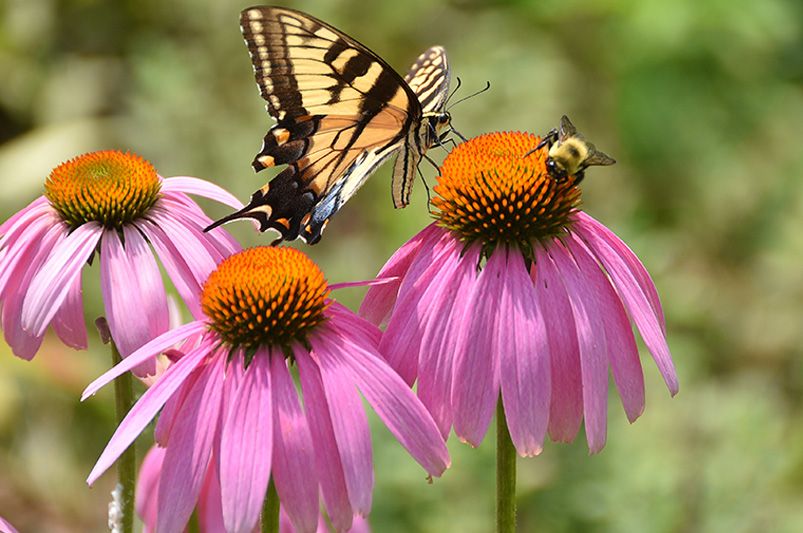
Purple Coneflower (Echinacea purpurea)
This bright herbaceous perennial does well in many places, which makes it a top pick for gardeners in North Carolina. Purple coneflower, known as echinacea purpurea, likes to be in full sun and needs well-drained soil. During the growing season, you can see its tall spiked inflorescence that brings a lot of color to your yard. This plant will get a variety of pollinators like native bees and butterflies, that come for its nectar. It also helps other wildlife because it is a host for butterfly larvae. By planting it, you help local wildlife and add to the biodiversity in your area.
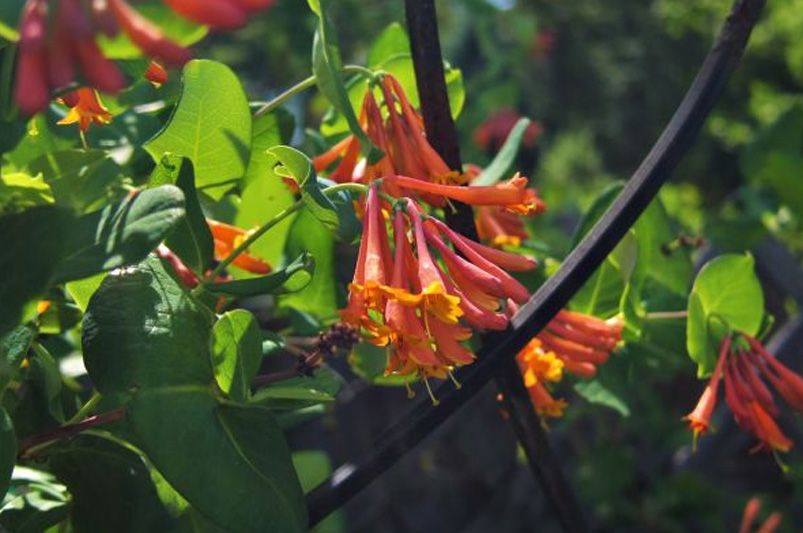
Honeysuckle "Major Wheeler" (Lonicera sempervirens)
Honeysuckle "Major Wheeler," or Lonicera sempervirens, is a bright native plant that grows well in North Carolina. You can have it in woodlands or put it in sunny spots or borders. It shows off groups of red, tube-like flowers that will get both hummingbirds and native bees to come to your yard. This plant is able to handle all soil types. It is good for moist or dry, well-drained soil, so you can use it in different areas of your garden. It grows fast and deer usually do not eat it. This makes it a good pick if you want nice cover and want to help the local environment, too. Your landscape will look good and be helpful to native bees and other pollinators through the whole growing season. It is an excellent addition to any place in North Carolina.
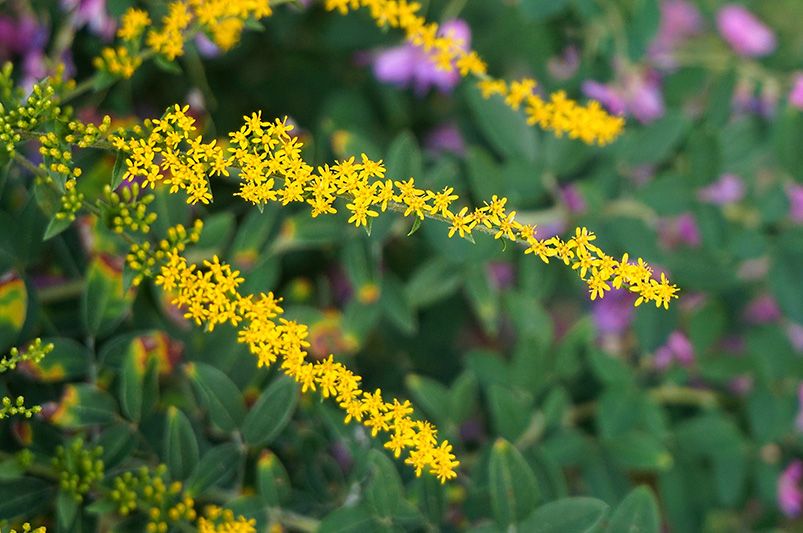
Goldenrod Firecracker (Solidago rugosa 'Fireworks')
The Firecracker Goldenrod (Solidago rugosa 'Firecracker') is a dazzling late-season bloomer for North Carolina gardens, that brings a vibrant splash of golden-yellow just as many other flowers begin to fade. This compact, clump-forming perennial features deep burgundy stems and rich green foliage that serve as a striking contrast to its bright, plume-like flower clusters. Blooming from late summer into fall, Firecracker Goldenrod is a magnet for pollinators like butterflies and bees, making it a standout in wildlife-friendly landscapes. Drought-tolerant and low-maintenance, it's ideal for borders, native gardens, and mass plantings, thriving best in full sun and well-drained soil.

Northwind Switch Grass (Panicum virgatum 'Northwind')
Northwind switch grass is a great pick for landscapes. It stands tall and has eye-catching leaves. These leaves change from bright green to gold in the fall. This plant is native and grows well in many soil types. It can live in dry or wet places so it is good for holding soil on slopes or stream banks. The plant’s height and look help set the stage for other plants that grow lower to the ground. It also draws in a variety of pollinators, like native bees. Northwind switch grass is good if you want a drought-tolerant choice. You don’t need to do much as it can grow well without a lot of human intervention.
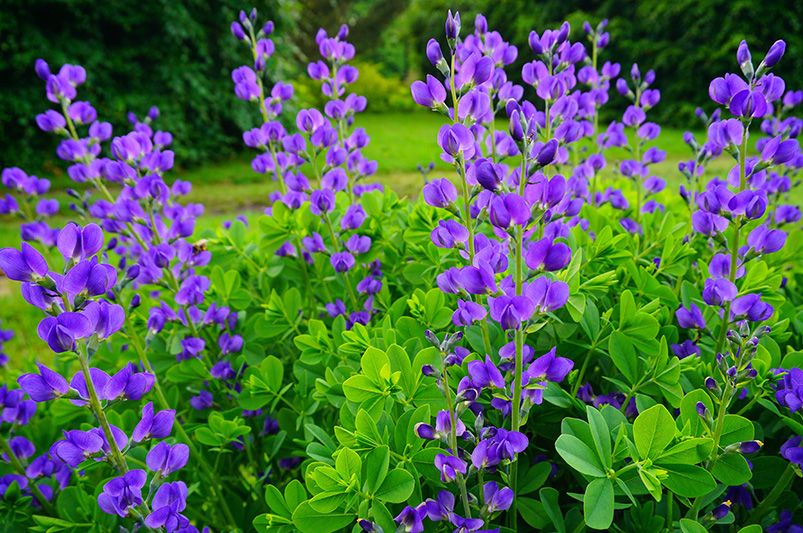
Blue False Indigo (Baptisia australis)
Blue false indigo is a lovely native plant found in North Carolina. It is a herbaceous perennial that grows well in many different garden spots. The bright blue flowers show up in late spring and look great in the garden. This plant brings in native bees and other pollinators, helping your yard stay full of life. It can grow in drier habitats and does well in sandy soils. Baptisia australis also helps the soil stay healthy by stopping erosion. It gives a home to local wildlife and adds more types of plants to your garden, which is good for biodiversity. The deep roots let it handle different amounts of water. With all these good features, blue false indigo is a great choice for your native plant garden in North Carolina.
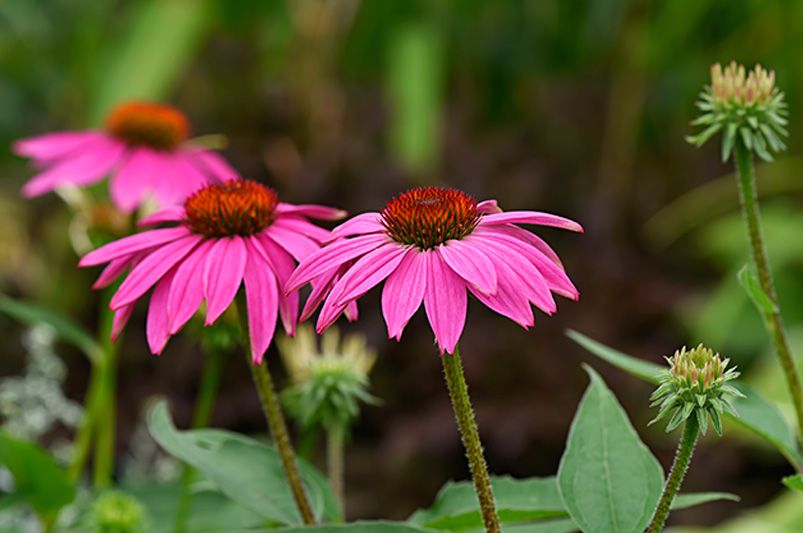
Powwow Wild Berry Coneflower (Echinacea purpurea 'PowWow Wild Berry')
Powwow Wild Berry Coneflower is a native plant that looks great in any garden. This echinacea purpurea can grow well in both full sun and partial shade. The bright raspberry petals around the big cone make it stand out. You will see a variety of pollinators like butterflies and native bees come to visit these flowers.
This herbaceous perennial will do well in many soil types, from sandy to clay. The plant is able to handle both dry times and a bit of extra water. During the growing season, it gives a good food source to local wildlife, which helps keep nature in balance. If you care for them, you will see colorful blooms from late summer to early fall.
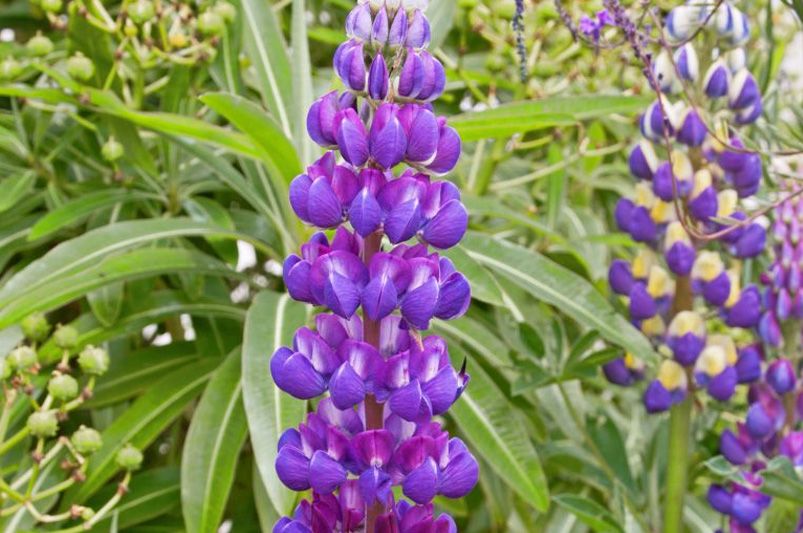
Gallery Blue Lupine (Lupinus polyphyllus 'Gallery Blue')
The gallery blue lupine is known for its eye-catching blue flowers. This herbaceous perennial grows well in a range of soil types. It is an excellent addition if you want more color in woodland gardens and natural areas. The plant draws a variety of pollinators, helping wildlife in your area. It likes sandy soils that drain well. Once the blue lupine is set in the ground, it does not need much water. You do not have to do much human intervention to keep it healthy. The leaves do not attract deer, so it stays safe. Adding this plant will give you a simple way to make your garden good for nature, and you will also enjoy seeing its bright beauty.
Planting Tips for Native North Carolina Plants
Knowing the special needs of native North Carolina plants can help them grow better and stay healthy. The top time to plant is in early spring or late fall. This way, roots get a good start before it gets too hot or too cold. To get the soil ready, you should check the pH and make sure the soil has enough water. You also need to think about the different soil types, like sandy soils or heavier clay. Sunlight is important too. Many native plants like to be in full sun, but there are some that do well in partial shade. If you keep up with weeding and mulching, the plants will grow strong and give a good home to local wildlife such as monarch butterflies.
Best Season to Plant
The best time to plant native North Carolina plants depends on the kind of plant you want to grow and what it needs. Most of the time, it is good to plant in early spring. This lets the roots get strong before hot weather comes. It helps plants like swamp milkweed and cardinal flower to grow well and show bright flowers. You can also plant in late summer or early fall. The air is cooler then, and this can lower plant stress and help with soil moisture. You need to look at your own local environment to make sure you pick the right time for your garden. That way, these lovely plants will have the best chance to grow with us and look good in your landscape.
Soil Preparation for Native Plants
Soil preparation is very important if you want native plants to do well in North Carolina. You need to look at the soil types and soil conditions first. This can help you know what your yard will need. When you add organic matter, the soil holds more water. It also gets more nutrients. This helps many different native perennials, like lobelia cardinalis and asclepias incarnata, to grow.
You should also test the pH levels to make sure it’s good for plants such as echinacea purpurea and eastern blue star. If you want your plants to do well, you should make sure the soil lets water drain the right way. This is true for both wet soil conditions and for drier habitats, which are common in North Carolina. When you take these steps, your plants will get what they need.
Sunlight and Water Requirements
Different garden conditions in North Carolina change how much sunlight and water your plants will need. Many plants do well in full sun. That means they grow best when they get six hours or more of sunlight every day. Some plants like eastern blue star grow better if they have partial shade instead.
Soil conditions are also important. The soil moisture matters a lot, too. For example, swamp milkweed likes wet soil conditions, so you need to keep the ground damp for it. On the other hand, butterfly weed grows well in drier habitats and is good for places that do not get a lot of water.
Knowing what each plant needs helps you take care of them in the best way. This can make your plants stronger and help them fight off pests and disease. By paying attention to North Carolina garden needs like full sun, soil moisture, and what each type likes, your garden will look better and last longer.
Maintenance Tips for Healthy Growth
Regularly checking on your native North Carolina plants is important to keep them healthy and looking good. To help them grow well, make sure the soil stays at the right moisture level. Different plants will need different amounts of water. Using organic mulch helps keep the soil healthy, hold in moisture, stop weeds from growing, and make the area good for your plants.
You should also trim back your plants now and then, which can help new stems and leaves to grow and stop plants from getting too crowded. This is important, especially for herbaceous perennials. Watch for any bugs or signs of disease. If you see problems, use good pest management methods.
These easy steps will help your North Carolina plants handle tough weather and other stresses throughout the year.
Ecological Benefits of Native Plants
Using native plants in your landscaping has many benefits for the local environment. These plants help support native bees, butterflies, and other good insects. They give these animals places to live and things to eat. The deep roots of native plants also help to stop soil from washing away. They make the ground stronger and keep it healthy.
Another good thing about planting native flora is that it saves water. These plants grow well in the area with little extra watering because they are used to the local weather. So, you do not need to water them as much as other plants.
By growing more native plants, you help the local environment stay strong. You also help different types of plants and animals live together, even when things like the weather change. This is good for everyone, now and in the future.
Supporting Local Wildlife
A garden full of native North Carolina plants can really help the local environment. These plants give food and homes to wildlife. If you add swamp milkweed and butterfly weed, you give monarch butterflies, native bees, and other helpful bugs a place to live and eat. These types of plants are great host plants, which means many caterpillars need them to survive. Planting cardinal flowers and eastern blue star will also bring in more pollinators and help keep the whole food chain working well. This is good for the local environment. It also helps keep nature in balance and supports different kinds of living things.
Improving Soil Health
Diverse native plant species are very important as they help soil stay healthy, which is key for any garden to last a long time. These plants grow naturally where you live, so they do well in the soil types that are already there. Their roots help break up hard ground and stop the soil from washing away. This also helps the soil hold more water. When the roots move through the soil, they add organic matter, which lets helpful microbes grow and thrive. Native plant choices also help reduce problems like pests or soil diseases. They make your garden stronger and more productive, giving the soil what it needs to stay healthy for years to come.
Water Conservation Benefits
Native plants are used because they fit well with the local climate. They help save water in our gardens. Their deep roots let them take up water better and hold more soil moisture. This means you need less water and not so much irrigation.
In dry times, native plants like swamp milkweed and the eastern blue star keep doing well even if there is not much water. These plants let people keep up with more green spaces but still use less water. Using these tough plants instead of usual garden plants can help you bring down your water use. You can make a good local environment, too.
These changes support a variety of pollinators. This makes the area much better for insects and other animals. It also brings new life into our yards by letting these small animals work in their own way. The plants also help connect one ecosystem to another, bringing us all a step closer to a healthy and full landscape.
Contribution to Biodiversity
Different kinds of plants are very important for keeping an ecosystem stable and strong. When you add native North Carolina plants to your area, you help many kinds of wildlife. You give a home to native bees, monarch butterflies, and other animals that need certain plants to live. The plants offer food and help make new connections between different living things. This builds strong, helpful links in nature.
When you help the ecosystem grow with more kinds of plants, all of the plants can be healthier. You may not need to do much human intervention to help them. This kind of teamwork in nature lets many plants and animals grow well together. It also helps keep everything in balance, which is better for everyone.
Design Ideas Using Native Plants
Adding native plants to your garden can make it look better and bring in more wildlife. To build a pollinator-friendly garden, choose nectar-rich plants like purple coneflower and butterfly weed. These will help attract many pollinators. Monarch butterflies and native bees love these plants. If the garden has shady spots, try adding plants like eastern blue star and oakleaf hydrangea. These give lush green leaves and bright flowers, making the area look nice. Using native plants also means you have less yard work. These plants grow well in the the soil types around you and fit the local weather. This way, many animals can find food and shelter in your garden.
Creating a Pollinator-Friendly Garden
Designing a garden to bring in different pollinators is about making a natural place with lots of native plants. When you include native perennials like lavender and cardinal flower, your garden gives butterflies and bees the food they need. Having flowers that bloom at different times, from late spring through summer, helps bring insects for a longer time. You can also group native perennials in clusters so they are easier for pollinators to find. Try adding a water feature or some spots for them to nest. This can bring even more pollinators to your garden. By doing all this, you help your local environment and enjoy your garden’s beauty at the same time.
Native Plant Options for Shade Gardens
Creating a rich shade garden is easy when you pick the right plants that do well with less light. The eastern blue star, called amsonia tabernaemontana, is a good choice. It has nice, star-shaped flowers and does well under trees or in spots with a lot of shade. You can also add cardinal flower, or lobelia cardinalis, to bring some bright color. This one is great as it pulls in a variety of pollinators.
For ground cover, try planting smooth aster. It is also known as symphyotrichum laeve. This one likes partial shade and can help make your soil better. When you use these native perennials in your garden, you get more beauty with little human intervention. They help local nature as well, making your outdoor space good for both plants and wildlife.
Using Native Plants for Natural Landscaping
A good mix of native plants can make your yard look more natural and fit in well with the land around it. When you use plants like the cardinal flower and swamp milkweed, you help the area by bringing in more kinds of living things. These plants also bring native bees and butterflies, so you get more pollinators around.
Native plants work well because they get used to the local soil conditions and need only the water that's already there. So, they are easy to care for and strong. You get lots of colors and kinds with these plants. This makes your yard nice to look at, and you do not need to do much human intervention. When you choose to garden this way, you help make the outdoors better for animals and for people living there, too.
Decorative Arrangements with Native Plants
Bringing native plants into arrangements is a great way to make any space look better and help the local environment. With North Carolina’s rich plant life, you can show off the beauty of plants like the cardinal flower and eastern blue star. These plants give homes to native bees and butterflies. When you use plants like swamp milkweed and butterfly weed together, you get nice contrasts that work in different soil conditions.
Mixing different colors, textures, and plant heights gives the space a bright and lively feel. You celebrate North Carolina’s amazing range of plants and help wildlife, too. The best part is that these plants need little human intervention to keep looking good. Make your space stand out and give something back to nature at the same time.
Challenges in Growing Native North Carolina Plants
Growing native plants in North Carolina can be tough at times. There are pests like aphids and caterpillars that get on the plants and can make them weak. In warm and wet weather, powdery mildew can show up and harm the plants even more. Invasive plants like Japanese honeysuckle may also be a problem because they can take the place of local plants and make it hard for the good ones to grow.
When the weather is harsh, it‘s important to keep up with soil moisture. You need to make sure the ground is not too dry when there is not much rain and protect the plants if it gets too hot or cold. There are ways to help your plants. You can watch for issues often and also pick types of plants that do not get sick as easily. Doing these things will make it easier for people in North Carolina to grow nice gardens and keep their native plants looking good.
Common Pests and Diseases
Challenges often come up when you grow North Carolina native plants. Pests and diseases are usually a big part of this. Aphids, for example, attack and weaken many kinds of plants, including native perennials. Powdery mildew is another problem and shows up on lots of plant leaves, especially when it is humid.
To deal with these problems, you need to check your plants often. It also helps to use integrated pest management techniques. These mix ways like bringing in natural predators and using simple, better ways to take care of your plants.
When you plant many kinds of species, it helps keep away big pest problems and powdery mildew. This also helps keep the area strong and healthy. If you watch for these common issues, you can help your North Carolina native plants grow well. Your work adds to the health of the local ecosystem.
Invasive Species to Avoid
Keeping the balance in North Carolina natural areas takes care and hard work, especially when it comes to fighting invasive plants. Some, like Chinese privet (Ligustrum sinense) and Japanese honeysuckle (Lonicera japonica), grow fast and can take over from local plants. You also find English ivy (Hedera helix) and porcelain berry (Ampelopsis brevipes), which climb and spread, covering native trees and bushes. This can push out local plants and hurt the homes of pollinators and wildlife.
Stopping these plants from spreading is important for the local environment. It helps native plants grow and keeps the area full of life and in good health. Knowing about the problem and taking action early are the best ways to protect these special natural areas for us all.
Handling Harsh Weather Conditions
Adapting to the tough weather in North Carolina is very important for native plants to do well. When you pick what you want to plant, it helps to choose kinds like butterfly weed and swamp milkweed. These plants can put up with different weather. Mulching holds on to soil moisture when there is not much rain. It helps the ground stay wet longer. Planting types with deep roots, like amsonia tabernaemontana, makes plants stand up better in dry times.
If you keep a close eye on your plants, you can spot stress from too much heat or rain. When you see something is wrong, you can act in time. This helps keep your plants healthy in the North Carolina climate. Make sure you change how you water as the growing season goes on. This will help the plants stay strong and healthy through spring and summer.
Solutions for Common Gardening Issues
Unwanted bugs and plant diseases can make gardening hard, but there are natural ways to help. Neem oil is a great organic option you can use to get rid of pests like aphids and spider mites. This helps native plants, like the cardinal flower, stay healthy. Check your plants' leaves and stems often to spot early signs of trouble. This lets you fix problems sooner and use fewer chemicals.
Adding compost to your soil makes it better and helps plants be strong, even when the weather or other things are tough. It is also good to pick native plants that grow well in the right soil types. This will make your garden healthier and help a balanced environment. Choosing the right plants can bring in more good bugs and help many living things all work together.
Community and Resources
Connecting with local gardening clubs and groups helps people who love native plants in North Carolina. These clubs often share helpful tips on how to grow native plants the best way. They also make gardening more fun and easy. You can find good advice, too, from workshops and online forums. These resources talk about how to use green gardening methods and why native plants matter for the local area. It is important to know where to buy native plants as well. Local nurseries and online shops are good places to get strong, healthy plants. When you take part in these local groups, you start to see the value in native plants. This supports the local environment, brings in more types of plants and animals, and helps nature in North Carolina.
Local Gardening Clubs and Societies
Gardening clubs and societies give people great ways to learn more about growing native plants and how to use good gardening methods that help the earth. These groups are run by the community. They plan workshops, field trips, and plant swaps during the year. This helps local gardeners meet each other. If you join one of these groups, you can learn about native North Carolina plants, like the cardinal flower and the eastern blue star. Members also share their own stories and helpful tips with each other. Being around other people who love gardening makes it easier to get support, grow as a gardener, and help the local environment.
Educational Resources and Workshops
There are many ways to learn about growing native plants in North Carolina. Local universities and gardening clubs usually offer classes on this topic. In these classes, you can find out how these plants help support local wildlife and make the area more diverse. You can also use online resources. There are webinars and tutorials to help guide you about the best ways to plant and take care of these plants.
Taking part in community workshops will help you get better at gardening. At the same time, you get to meet other people who, like you, care about keeping the different plants of the region safe. These activities help you learn more about native habitats in North Carolina. You get to do this in a hands-on way that also lets you enjoy and understand the natural world around you.
Where to Buy Native Plants
Exploring options to find native plants can take you to many places. You can visit nursery centers, botanical gardens, and local farmer's markets. Many of them focus on native North Carolina plants. This helps you get plants that fit your area’s needs. You can also join local gardening clubs. People in these groups often share good tips and contacts so you can get strong native perennials. Online nurseries show many plants, such as the cardinal flower and swamp milkweed. These plants can help make your garden better for wildlife. It is important to always check that the plants you buy are real and good quality.
Online Forums and Support Groups
There are many online forums and support groups for people who are interested in North Carolina native plants. These websites help people meet other gardeners from different places. Members share tips, stories, and advice about growing plants that are native to North Carolina.
People often talk about problems like tricky soil conditions and what to do about pests. They also share happy stories when they see blooms like the cardinal flower or swamp milkweed in their gardens.
Talking with others in these groups helps you learn more about what grows around us. It helps you value the many types of plants and animals that are part of our lives.
Conclusion
Choosing native North Carolina plants is good for your outdoor space and helps the local environment. When you pick these plants, you support monarch butterflies, local bees, and a variety of pollinators. These plants are used to the soil conditions in North Carolina. That means they need less care and use less water. Native plants also make your garden look good and help nature around you. By adding these strong perennials, you give back to the planet and make your garden more beautiful. Choose native plants to have a healthy and lasting garden.
Frequently Asked Questions
What is the easiest native plant to grow in NC?
The black-eyed Susan (Rudbeckia hirta) is one of the easiest native plants to grow in North Carolina. This hardy flower can do well in many different soil types. It attracts pollinators and needs little care. Because of this, it is good for people who garden for the first time and people who have a lot of experience.
How do native plants benefit local wildlife?
Native plants give important food and places to live for local animals like birds, insects, and mammals. These plants have native flowers, seeds, and leaves that help pollinators. They also help keep the ecosystem in balance. This helps keep more types of living things in the area, so it supports and keeps local animals around.
Can native plants survive in urban areas?
Yes, native plants can grow well in cities. This is because they are used to the weather and soil in those places. They often do not need much work to keep them healthy. These plants make the most of what is there, like water and sunlight. They also help animals that live in the area and are good for local nature, even among buildings and roads. Native plants are strong and can handle harsh city life, so they are a good choice for city gardens.
Are there any toxic native plants to be aware of?
Yes, there are some native plants in North Carolina that can be dangerous. American beautyberry has seeds that can be harmful. Eastern blue star has leaves that can also be toxic. You should always look up details about these plants before you grow them. It is even more important if there are kids or pets in your home.
How often should native plants be watered?
Native plants usually need to be watered deeply one time each week. You should change this if there is rain or if you see extra soil moisture. When the weather is hot or very dry, you can water them more often, but make sure the soil drains well. Always check what your plants need, because some may want more water and some may need less.
Case Studies: Successful Native Plant Gardens
Many gardeners have changed their gardens by using native plants. There are case studies that show these gardens help local wildlife. It can be easier to care for these gardens, and they do not need as many resources as other types of gardens. This makes them a good choice for people who care about the environment.
Residential Native Garden in Asheville
Creating a native garden at home in Asheville means you should pick plants that do well in the local weather and soil. Try to use flowers like cardinal flower and eastern blue star. These give your garden bright color and also help bring in local birds, bees, and other animals. Doing this can make their world better, bring in more types of life, and you will have less yard work to do. This is a good way for you to help the environment stay healthy.
Community Garden Projects in Raleigh
Raleigh has many community garden projects. These help people work together and care for the earth. In these projects, residents grow native plants. This helps the local plants and animals to do well. The projects also teach people about good gardening habits. People in the community can learn from each other and make their area better.
School Green Initiatives in Durham
School green initiatives in Durham help students learn about caring for the environment. These programs have things like recycling, planting gardens with local plants, and setting up outdoor classrooms. All of this helps students get to know nature. They learn to look after the earth, help plants and animals, and get real experience on how to take care of the world.
Conservation Efforts Using Native Plants
Conservation work that uses native plants is about bringing back natural areas. It helps local plants and animals at the same time. You can also make better homes for wildlife. When people use plants that belong to the area in their projects, they help the soil. This can stop it from washing away. Using these kinds of plants makes the land stronger when the weather changes too. If everyone follows practices that last a long time, it helps keep nature in balance.
Personal Stories from Local Gardeners
Local gardeners in North Carolina talk about their experiences with native plant gardening. They tell of trying new gardens for pollinators and how they deal with problems like bugs. These stories show the joy that comes with these plants. They also show how people come together and help each other as they learn more about native plant life in the area.
Ready to refresh your North Carolina landscape with a custom design?
ShrubHub’s North Carolina 3D landscape design service makes it easy to reimagine your outdoor space with stunning visuals and expert guidance. Our team understands the local climate and plant palette, crafting personalized designs that enhance beauty, functionality, and sustainability. Whether you're updating your front yard or transforming your entire backyard, we’ll help you bring your landscape goals to life—right from your screen.


